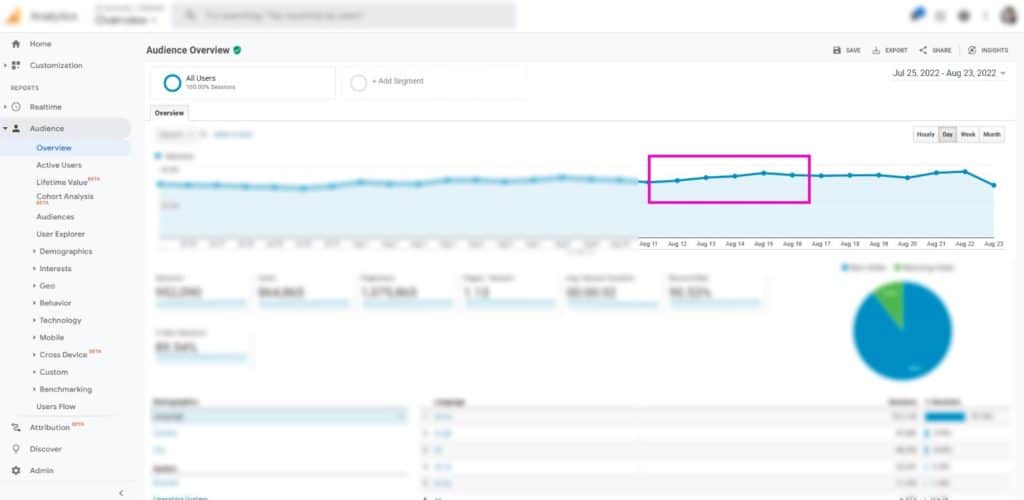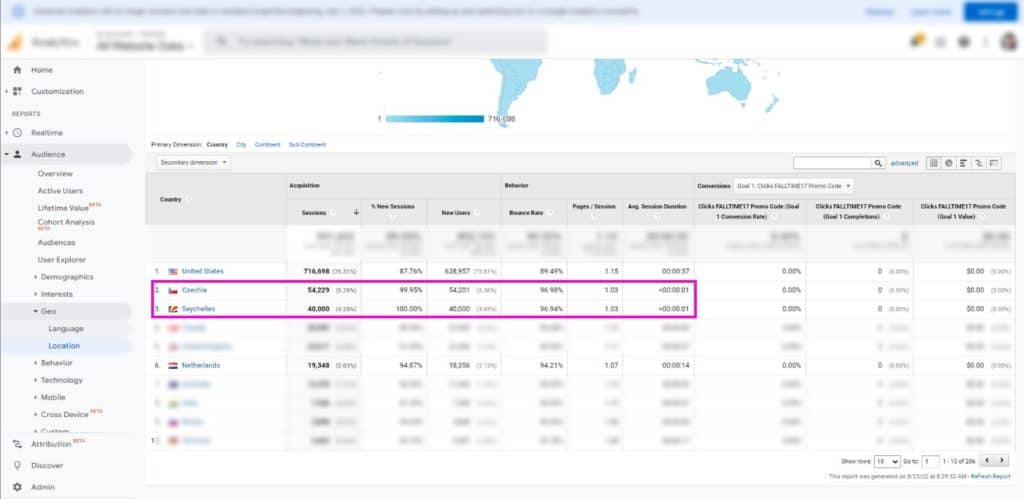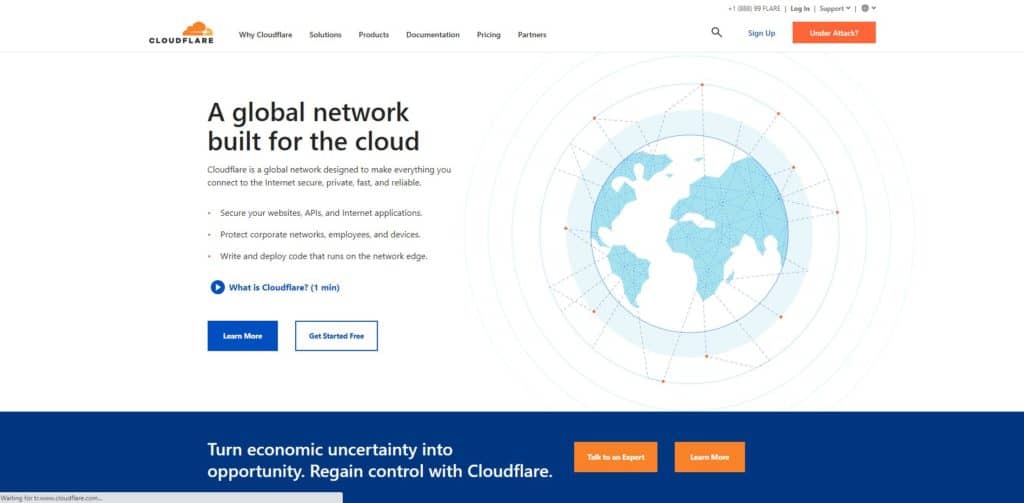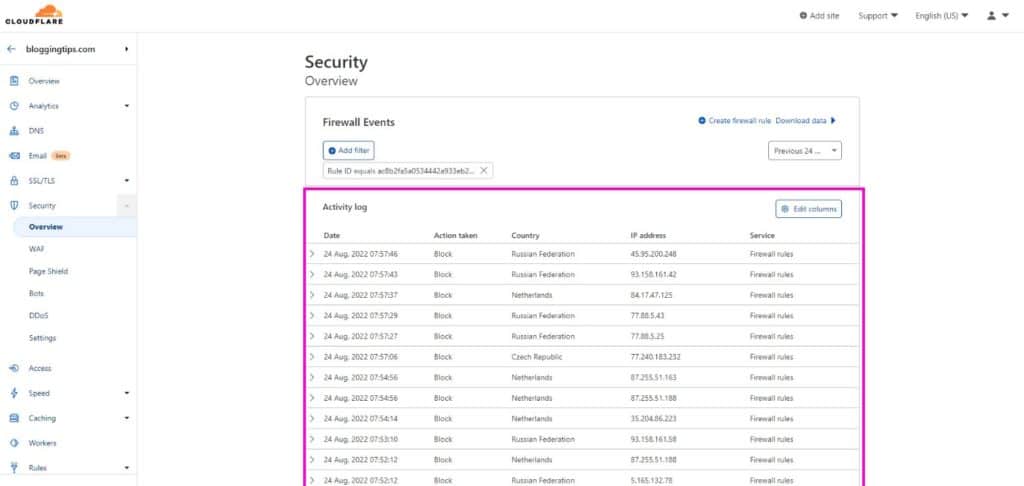Over the past few days, I noticed a very large uptick in traffic across my portfolio of sites.
I have been making a fairly decent push into creating new content and rewriting old content so I assumed the increases were a result of those efforts.

At first, I was happy to see a fairly sizeable increase in traffic numbers, but let down when I realized they weren’t real people visiting the site.
After a little digging, I came to realize that the traffic increase was due to spam bot visits from three locations: Seychelles, Czechia, and the Netherlands.
Contents
- The Issue: Spam Traffic From Czechia and Seychelles
- How To Stop Spam From Czechia and Seychelles [2 Steps]
- 1. Ensure You Are a Victim of Spam Visits
- 2. Challenge or Blog the Traffic in Cloudflare
- 3. Filter Traffic in Google Analytics [Optional]
- Does This Solution Work?
- Frequently Asked Questions
- Wrapping Up
The Issue: Spam Traffic From Czechia and Seychelles
Normally I would be happy that my traffic is increasing but not in this case.
This traffic is spam – hurtful in every way, shape, and form.
Therefore we need to block it and solve the problem for good.
When I look at my Google Analytics report, these countries throw up a huge red flag for me.

As you can see by taking a brief look at the metrics, the bounce rate is high and the time on page is less than 1 second for visits from both Czechia and Seychelles.
I’ve heard cases against this traffic:
- This is a negative SEO attack against successful website operators.
- These bots can destroy ranking signals and tank a website.
- Bot traffic like this is lowering RPMs from ad networks and leading to lower payments week over week.
I have no idea what the real reason behind this traffic is or why it is being directed at so many high-performing sites.
Regardless of the reason or what this actually does to a website, it can’t be helpful.
How To Stop Spam From Czechia and Seychelles [2 Steps]
Stopping this type of spam is fairly easy and doesn’t take as long as you’d think. However, a few steps are required to do so.
You need to:
- Identify if you are a victim of this spam.
- Block the spam traffic in Cloudflare.
- Filter the traffic in Google Analytics [Optional]
Now let me show you how each is done.
1. Ensure You Are a Victim of Spam Visits
First, you must determine whether or not you are a victim of spam visits.
You can easily find spam visits in Google Analytics by following the steps below:
Here’s an interactive tutorial
** Best experienced in Full Screen (click the icon in the top right corner before you begin) **
Once you determine that you are a victim of spam originating from these countries, you’ll want to manage it with Cloudflare.
2. Challenge or Blog the Traffic in Cloudflare
Once you’ve determined that you are a victim of spam from these countries, you need to stop it from occurring.
We can do this by using Cloudflare.

I’m already integrated with Cloudflare, so turning the tables on the tables on the spammers and addressing this traffic will only take a few steps.
But if you aren’t already using the platform, I highly suggest signing up and integrating into their system ASAP.
They have paid plans that offer robust, enterprise-level protection against all sorts of threats, but most bloggers and websites will be able to get away with using their free plan.
It offers protection against many types of common threats such as hotlinking, bot traffic, and in our case today, spam.
How to Block Spam Traffic From Czechia and Seychelles in Cloudflare
To block this traffic using Cloudflare, we’ll want to log into our account and add a custom rule using the WAF (Web Application Firewall) security feature.
Here’s an interactive tutorial
** Best experienced in Full Screen (click the icon in the top right corner before you begin) **
After setting up the rule in Cloudflare, sit back and see what happens.
Keep in mind that once you implement the rule, it might not take effect right away.
For me, it took a few hours to take effect, but after that I did see a substantial increase in traffic.
3. Filter Traffic in Google Analytics [Optional]
After blocking the traffic, an additional step that you can take is to filter out the spam traffic from Google Analytics to ensure that this issue stops for good.
I haven’t personally done this step myself because the solution I proposed above worked pretty well for me.
However, if you report to stakeholders who aren’t quite as understanding as a carefree group of digital marketers, I’d suggest adding this step.
For that, I’ll refer you out to Google’s official guide to creating and managing filters.
Does This Solution Work?
At first I tried out the Managed Challenge option but found that blocking the traffic entirely was more effective.
In an ideal world, I would be able to challenge the traffic to retain legitimate users, but I didn’t really have that much real traffic from there anyways, so the tradeoff is clear to me.
I set these rules up a few days ago, and as you can see, they are working well.

Based on my experience, some traffic does still get through, but it is much better than it was.
I will continue to track my progress, but overall it appears the solution is working well.
Frequently Asked Questions
Common questions related to this topic:
How can you tell fake traffic?
Fake traffic can be spotted by a handful of warning signs – extremely high bounce rates, low average session durations, and traffic originating from geographic areas known for spam.
When in doubt, consult an SEO or cybersecurity professional, as there are almost always nuances and one answer does not fit all cases.
How do you stop fake traffic?
There are a number of ways to stop fake traffic to your website.
The most effective method is to block the bots and IP addresses that are known to generate fake traffic, and use honeypots and CAPTCHAs on your forms to discourage bots from completing them.
You can also use Google Analytics to set up filters that block known referrers of fake traffic.
Wrapping Up
I am not the first one to tell you that this is a very annoying problem. However, it does appear to be solvable with a little bit of work.
This seems to be the common solution, but if there is anything I missed or something that works better, please let me know in the comments below and I’ll happily take a look.




